Notable
Furniture & Lighting Award
Core77 Design Awards 2017
Interlocking Table
This coffee table combines knowledge extracted from traditional timber joinery and new digital fabrication technologies, such as CNC-milling and multi-material additive manufacturing, with the application of computational structural simulation.
Composed of 5 interlocking elements, the table does not require any mechanical fasteners for assembly and disassembly. The cantilevering composition of the table illustrates the creative use of both geometry and material to withstand structural loads. The highlight of the table is the two legs with wood grain-like patterns, which are fully printed using Multi-Material 3D printing technology. The grain-like pattern in the legs represents the optimal grain orientation, while the fitting between the elements is ensured by a material arrangement inspired by the wood scarfing technique. The project is a manifestation of future design work where designers not only create geometry but also design material at a microscopic scale to achieve better integration of performance and aesthetics.
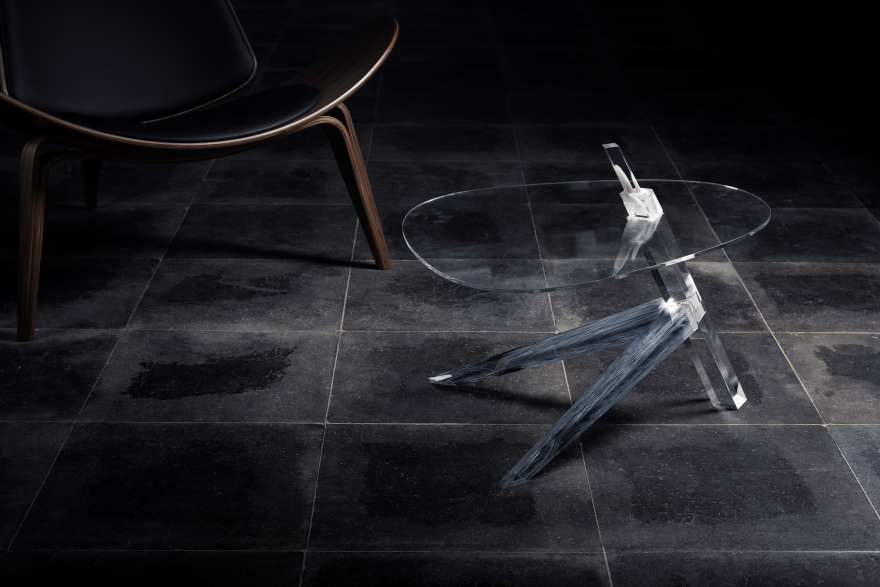 Jansen Teo Photography
Jansen Teo Photography
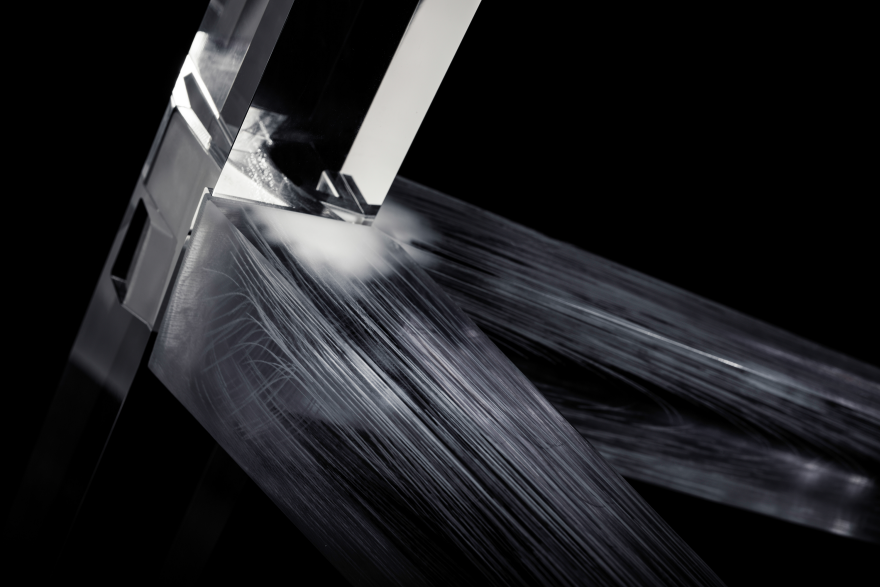 Jansen Teo Photography
Jansen Teo Photography
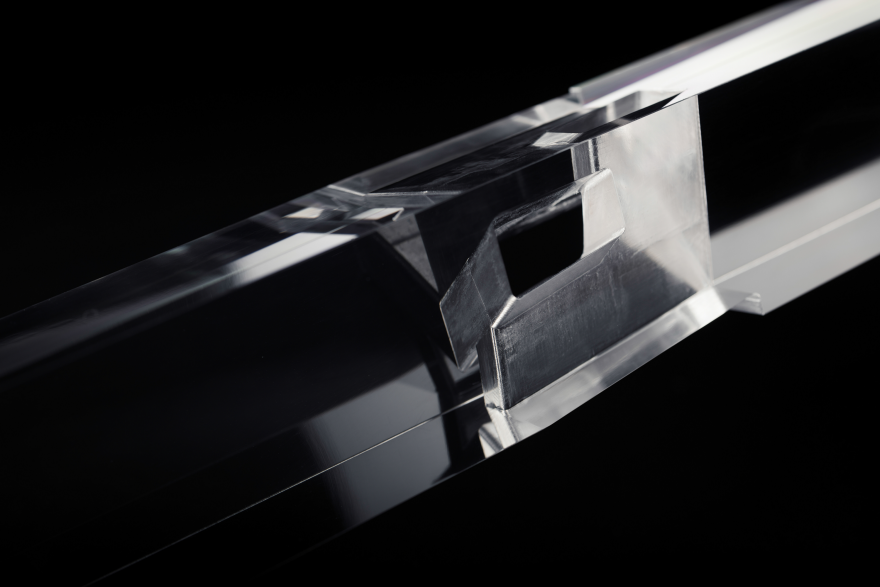 Jansen Teo Photography
Jansen Teo Photography
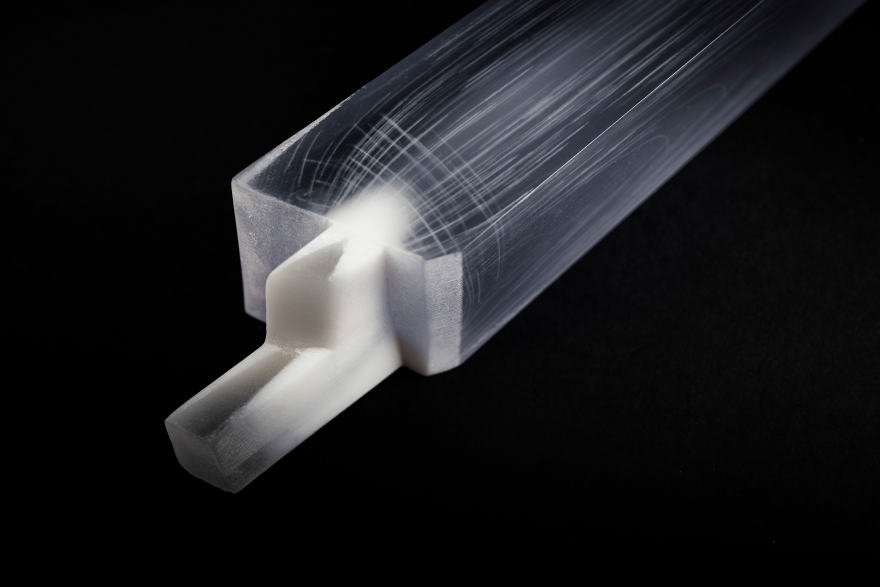 Jansen Teo Photography
Jansen Teo Photography
 Jansen Teo photography
Jansen Teo photography
 Jansen Teo Photography
Jansen Teo Photography
 Jansen Teo Photography
Jansen Teo Photography
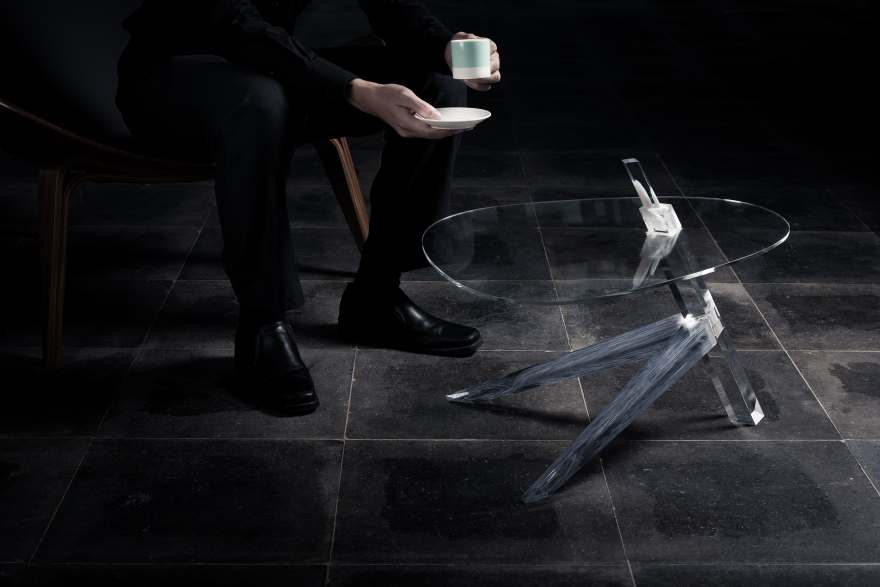 Jansen Teo Photography
Jansen Teo Photography
Interlocking joinery, employed in various areas from furniture design to building construction, creatively exploits both material and geometry and hence, doing away the need for extraneous mechanical fasteners, such as bolts or screws. As such, the design of novel details requires the understanding of thematerial and all that it entails: its characteristics of varied structural performance, unique artisan techniques of fabrication, geometrically intricate assembly procedures, and innate aesthetical qualities.
This small coffee table composed of 5 elements with interlocking joinery is an extension of the traditional craft knowledge in light of new simulation and fabrication technologies. The design of the table involved careful considerations on geometry and material to withstand the structural loads and to provide easy assembly and disassembly system for the user.
Geometry Design:
Assembly and disassembly direction of interlocking joints require careful consideration to achieve the overall structural integrity. This is because the assembly (insertion) direction of interlocking joints is the direction in which the interlocking structures cannot transfer loads. For example, the middle joint where all 3 legs intersect is designed based on a traditional Japanese joinery called Koneboso-Katamuki-Doutsuki. The joint is typically used to connect columns and beams in an orthogonal configuration. The geometry of this traditional joint is modified so as to fit the desirable spread angle for the table leg. At the same time, the tilt of this assembly set ensures the pull-out force (force acting on the disassembly direction) to be resisted by the ground. The overall design went through several iterations of prototyping and Finite Element (FE) Analysis before coming to its final form.
Material Design:
The highlight of the table is the two legs with wood grain-like patterns, which are fully printed using Multi-Material 3D printing technology. Multi-material 3D printing processes enable the fabrication of 3D objects composed of varying material properties at the microscopic scale. Selective material deposition offers opportunities to design and fabricate objects with heterogeneous properties potentially exhibiting superior functional performance characteristics compared to objects comprised of homogeneous material distributions. We have developed custom software tools to achieve the material design informed by the Finite Element Analysis results. The grain-like pattern in the legs represents the optimal grain orientation, while the fitting between the elements is ensured by a material arrangement inspired by the wood scarfing technique. The project is a manifestation of future design work where designers not only create geometry but also design material at a microscopic scale to achieve better integration of function and aesthetics.